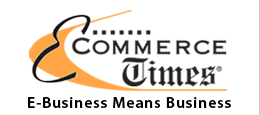What SAP's CEO Needs To Know About SaaS
In an InformationWeek interview on Tuesday, SAP’s CEO and president of global field operations, Bill McDermott, downplayed the platform capabilities and enterprise-readiness of Software-as-a-Service (SaaS) and cloud computing.
Although Salesforce.com’s outage this week gave McDermott’s comments some immediate validation, they were still reminiscent of the views of a previous generation of tech industry executives who discounted the value of PCs in the corporate world. As a result of the myopic ideas of those former tech titans, companies like Digital Equipment Corporation and Wang Computers no longer exist.
Denial didn’t work out well for them and it won’t work for SAP either.
Executives at SAP aren’t alone in their efforts to downplay SaaS. The CEO of Lawson Software made even more atrocious comments a few months ago, as did Oracle’s CRM head at November’s SIIA On-Demand conference.
Of course, much of their ridicule is aimed at fending off the competitive threat which the SaaS/cloud computing movement represents to their core business.
AMR Research expects the overall enterprise application market to only grow 3% between 2008 and 2009, and that % factors in the 25% growth of the SaaS portion of the market. In fact, AMR believes the SaaS market could grow as much as 40% if the economy continues to struggle, while on-premise apps continue to stagnate.
For a myriad of reasons, SAP and other ‘legacy’ application vendors face stiff challenges migrating their software to an on-demand platform and business model. Therefore, it is easier to discount the viability of on-demand solutions.
However, given rising customer adoption and strong customer satisfaction which SaaS is enjoying, the legacy vendors are better served embracing rather than stonewalling the SaaS/cloud computing movement.
There are numerous ways these companies can move in this direction without significantly disrupting their operations.
For instance, SAP can leverage its vast services organization to learn about the realities of deploying SaaS solutions in SAP environments and leverage that knowledge to help its product development team build solid SaaS solutions of their own. The services organization can also build ‘good will’ by helping SAP customers adopt and optimize their SaaS solutions in SAP environments.
SAP can also employ the ‘tugboat’ strategy I suggested over a year ago. This strategy encourages SaaS companies to build solutions which integrate with SAP’s software to enhance its capabilities and satisfy SAP’s customers. Working with SaaS companies can help SAP better understand the technical requirements for building and delivering SaaS solutions, and accelerate the development process.
As Niccolò di Bernardo dei Machiavelli famously suggests in his famous book, The Prince, it is better to stay close to your enemies than to distance yourself from them.




